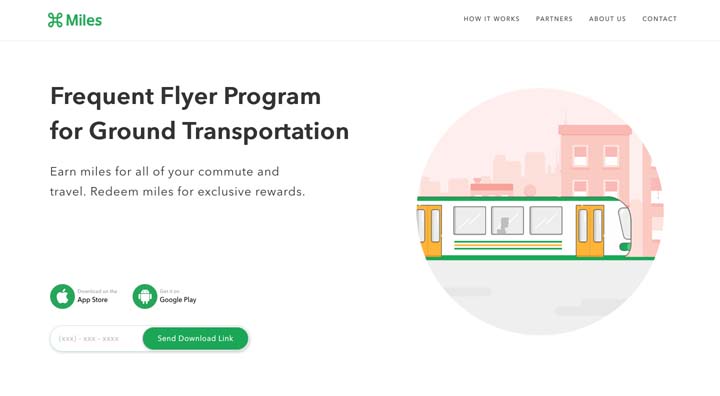Caltrain and the San Mateo County Transit District are partnering with Miles, an app-based service that bills itself as a universal miles-earnings program. Users earn points on a sliding scale based on mode of transportation, with transit riders getting three points for each mile traveled.
“Our partnership with Miles will offer commuters an additional incentive to choose public transit over driving alone,” says Jim Hartnett, the transit agency’s CEO and general manager. The program offers exclusive rewards as part of a 12-month pilot that launched in June.
The Miles app, available for iOS and Android devices, automatically tracks user trips and identifies how they are traveling using artificial intelligence and analytics. Anonymous, aggregated information is made available to the transit agency, but no personal data is shared.
Jigar Shah, co-founder and CEO at Miles, tells Trains News Wire, “cities can better understand traffic patterns and trends by mode of transportation, and in turn introduce targeted rewards to increase ridership.”
Just 1 year old, the Silicon Valley company says it is also working with Sacramento Regional Transit and the Contra Costa Transportation Authority.
“While it’s still early, the Miles platform has already made a positive impact,” Shah asserts. “Nationwide, more than 80% of Miles users are opting for some form of green travel such as carpooling, public transit, biking or walking as a part of their daily commute.”
Bay Area Rapid Transit first tested an incentive program dubbed “BART Perks” for six months in 2016. The goal of that program wasn’t to encourage more rider use, but to shift use to off-peak periods.
Eighteen thousand participants signed up, becoming eligible for cash rewards and rewards for starting trips outside rush hour. BART shelled out $210,000 over the course of that program and saw a 10% reduction in peak-hour travel by participants.
The program was funded in part by a $508,000 grant from the Federal Highway Administration under its Value Pricing Pilot Program.
BART conducted a second six-month program in the first half of this year. Results of that test will be released in August.














